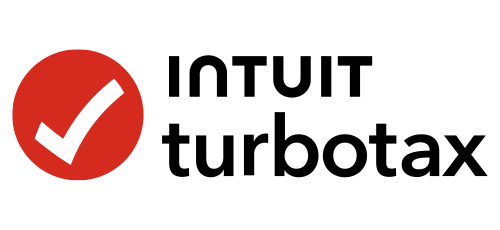Benefits and Risks of Shareholder Loans
TurboTax Canada
May 22, 2025 | 5 Min Read
Updated for tax year 2024


A new way to file your business taxes is here!
Shareholder loans can be valuable funding solutions for businesses and business owners. They allow shareholders to either borrow money from their corporation for personal expenses or lend money to their corporation to fuel growth.
However, shareholder loans are subject to specific regulations and requirements from the Canada Revenue Agency (CRA). So, when it comes time to file your business taxes, it's important to know how to report and prepare your shareholder loan activities accordingly.
Here, we'll explain when and how to use shareholder loans effectively for tax planning and key steps to avoid significant tax consequences.
Key Takeaways
- Shareholder loans are financing solutions for either funding or withdrawing money from a business.
- If shareholders loans are repaid by the shareholder within a certain time period, they aren't reported as taxable income
- Shareholders can clear their loans via salary or dividends to avoid double taxation.
What is a shareholder loan?
A shareholder loan is a form of funding that can function in 2 different ways:
- a shareholder loans money to a business, or
- a business loans money to a shareholder
A shareholder might borrow money from a business to fund a personal expense like a new car, for example. Meanwhile, a shareholder might loan money to a business to help cover certain needs like employee payroll or new equipment purchases. A small business owner might use their own personal money to help cover startup costs as they build their company. They can report it as a loan with the intention of being repaid by the business later on, once cash starts coming in.
Shareholder loans are reported on a business's balance sheet as either assets (money the business is owed from shareholders) or debts (money the business owes to shareholders).
How does shareholder loan repayment work?
Shareholder loan balances are usually calculated at the end of a business’s fiscal year. If the net balance is positive, the shareholder owes money to the business. If the net balance is negative, the business owes money to the shareholder.
Shareholders should repay any loans they received from the business by the end of the following fiscal year. Otherwise, they will have to report it as income on their personal taxes. For example, say a shareholder borrows $15K from the business in April 2025. The business’s fiscal year ends on December 31st. That means the shareholder will have to repay their loan by December 31, 2026 or report it on their personal tax return as income. This is known as the "one-year rule."
Businesses should also pay any debts to shareholders within a fiscal year but there are no tax implications if they don't. Usually, repayment terms are established through some sort of legal contract with the shareholder. So, it's up to the shareholder and business to complete a written contract or shareholder loan agreement stipulating terms like interest and repayment periods.
Shareholder loans can be easily repaid by transferring money between a shareholder's personal bank account and the business bank account. All payments should also be accounted for in bookkeeping to ensure they are documented for tax purposes.
What are the tax implications of shareholder loans?
Shareholder loans can provide accessible funding for businesses and shareholders, but they can also come with certain tax implications. To prevent misuse or misreporting of these loans, borrowers and lenders have to adhere to these CRA requirements:
- Properly document the loan. The shareholder and business should create a legal contract outlining the loan amount, interest rate, and repayment terms.
- Use prescribed interest rates. Shareholder loans must bear interest rates set by the CRA. These prescribed interest rates are recalculated every quarter. As of Q2 2025, the prescribed interest rate for shareholder loans is 4% annually.
- Follow the "one-year rule." If a shareholder borrows money from a corporation and doesn't repay it by the end of the following fiscal year, they have to report the loan as personal income and pay taxes on it. This can also result in double taxation, meaning, both the business and shareholder have to pay taxes on the loan.
- Make sure interest is paid on time. While the principal balance can be repaid by the end of the following fiscal year, any outstanding interest must be paid within 30 days of the following fiscal year. So if the shareholder in our example above still owes $15K on their loan—at a 4% interest rate—they'll have to pay $600 by January 31, 2026.
- Pay tax on interest benefit. If you're given a loan at a lower interest rate than the prescribed rate, the interest benefit (the amount you saved with your low rate) is taxable and added to your income.
- Report forgiven loans. Even if a shareholder loan is forgiven, the loan amount is considered a dividend and will still be taxed on your personal income tax return.
Worried about meeting these requirements? A business tax expert is there to help as you file, and ensure you are compliant with tax regulations.
How do salaries and dividends compare to shareholder loans?
Normally, shareholders are paid by corporations via salaries and dividends:
- Salaries. Fixed payments that are made on a set schedule, such as every month or every 2 weeks.
- Dividends. Fluctuating payments made from a company's profits; they're usually paid quarterly.
Salaries and dividends are considered income, so shareholders need to report them on their personal taxes. However, dividends are generally taxed at a lower rate than salaries.
How to avoid common shareholder-loan tax problems
The CRA will be on the lookout for misuse of shareholder loans and reporting issues. So when handling shareholder loans, it's important to avoid common tax problems.
Before you file, however, steer clear of these potential issues:
Double taxation
This occurs when the same source of income is taxed twice. If a shareholder fails to repay their loan on time, they have to pay taxes on the loan and the company can't write off the loan—resulting in higher taxes. Shareholders can avoid this by paying their loans on time or withdrawing funds as dividends or salaries instead of as loans.
Taking out a series of loans
Back-to-back shareholder loans can catch the attention of the CRA. This occurs when a shareholder takes out a loan, repays it by the end of the fiscal year to avoid taxes, and then just borrows the money again soon after. The CRA looks for a series of loans to help prevent this from happening. So it's best to only take out a shareholder loan when you truly need it and repay it on time, or consider withdrawing funds as salaries or dividends.
Preparing for taxes with shareholder loans
Shareholder loans are a popular solution for moving money between corporations and their owners or shareholders. Still, while they can come with certain personal tax benefits, they can also cause complexities come tax time.
Most notably, lenders and borrowers must adhere to certain CRA requirements for documenting and reporting shareholder loans. The terms of the loan, including the amount, interest rate, and repayment terms, must be properly documented in writing. And they can take key steps to avoid double taxation, like withdrawing funds as salary or dividends.
So, if you've taken out a shareholder loan this year—or provided one to your business—consider these important tips when filing your taxes.
You run the business, we handle the taxes.
Filing your taxes in Canada can be easier, even with corporate T2 returns. Use TurboTax Business Assisted, a CRA-certified tax software, to file your company taxes with ease. You can get help and guidance from Canadian business tax experts while you prepare your return, and a final review before you file—so you’re never on your own.
Related articles

© 1997-2024 Intuit, Inc. All rights reserved. Intuit, QuickBooks, QB, TurboTax, Profile, and Mint are registered trademarks of Intuit Inc. Terms and conditions, features, support, pricing, and service options subject to change without notice.
Copyright © Intuit Canada ULC, 2024. All rights reserved.
The views expressed on this site are intended to provide generalized financial information designed to educate a broad segment of the public; it does not give personalized tax, investment, legal, or other business and professional advice. Before taking any action, you should always seek the assistance of a professional who knows your particular situation for advice on taxes, your investments, the law, or any other business and professional matters that affect you and/or your business.









